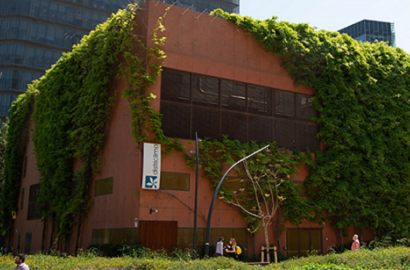EDP moves forward with renewable hydrogen project in Campo de Gibraltar area

It will invest nearly 200 million euros to develop 130 megawatts of electrolysis capacity.
The energy company EDP has taken a new step in its project to transform its facilities in Los Barrios (Cádiz) into Green H2 Los Barrios, which it describes as the renewable hydrogen valley of the Campo de Gibraltar area. At the end of August, it obtained the comprehensive environmental authorisation that will enable it to develop 130 megawatts of electrolysis capacity at this plant. This operation will involve an investment of close to 200 million euros.
The 130-megawatt capacity is the first of two main phases of the project, which aims to reach 500 megawatts in the future, if market conditions are favourable. Thanks to its designation as an Important Project of Common European Interest (IPCEI), the plant has received 78 million euros in government aid for its first phase, and a further 18 million euros from the 2022 and 2023 calls in the PERTE ERHA Pioneers programme.
The electricity supply that the plant will require to produce renewable hydrogen by electrolysis will come from onshore wind and solar power generation plants. This is the second project of this type by the Portuguese company that has undergone environmental processing in Europe, after the Asturias H2 Valley, located in the town of Aboño. With these and other projects, EDP intends to transform its thermal power plants into sustainable hubs linked to green hydrogen, energy storage, electricity system flexibility and renewable energy.
More than 100 megawatts of hybridisation
This was not the only milestone achieved by the energy company in August. With the commissioning of its third hybrid farm in Spain, which combines solar and wind energy, it has surpassed 100 megawatts for mixed installations sharing the same point of interconnection in our country. This combination of technologies makes it possible to increase electricity production by up to 40%.
So far, EDP has hybridised and currently operates the 28.75-megawatt Cruz de Hierro (Ávila, pictured), the 28.2-megawatt Villacastín (Segovia) and the 46.4-megawatt Castillo de Garcimuñoz (Cuenca) wind farms in Spain, bringing its total capacity to 103.35 megawatts. Hybridisation of existing assets is one of the main avenues for the growth of renewable energy, as it allows for the accelerated introduction of additional renewable capacity without having to wait for new projects to be implemented.
New hybrid project to supply Bloomberg
The Portuguese company already has another hybridisation project underway. This is the Rabosera wind farm, located between the towns of Luna (Zaragoza) and Gurrea de Gállego (Huesca), which has been operating for over a decade. The provision of photovoltaic panels in the immediate vicinity will increase its capacity to 40 MWp.
This initiative is backed by a long-term power purchase agreement (PPA) with US finance company Bloomberg. Under the ten-year contract, Bloomberg's total electricity consumption in Europe will be generated by the new solar panels, which are expected to produce more than 14 GWh per year.
Photo: EDP




